Something went wrong!
Hang in there while we get back on track
Best attractions in Lower Austria
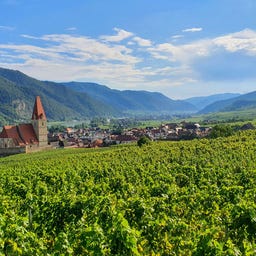
The Wachau is one of the most beautiful cultural landscapes in Austria and one of our favorite excursion destinations. This picturesque Danube valley stretches between the towns of Melk and Krems. It is not only famous for its terraced vineyards and the renowned Wachauer Marille (apricots) but also for Melk Abbeyand the castle ruins of Dürnstein (where King Richard the Lionheart was once held captive). Whether you're hiking on the World Heritage Trail, visiting during the apricot blossom season, or stopping by a traditional Heuriger, the Wachau offers unforgettable experiences for all your senses.
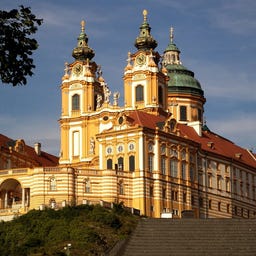
Nestled in the picturesque landscape of the Wachau, the magnificent Melk Abbey rises above the Danube. Built between 1702 and 1746 based on designs by Jakob Prandtauer, the abbey is considered a masterpiece of Baroque architecture and is recognized as a UNESCO World Heritage Site. In addition to regular concerts and changing exhibitions, the monastery offers fascinating insights into the spiritual life of the Benedictines.
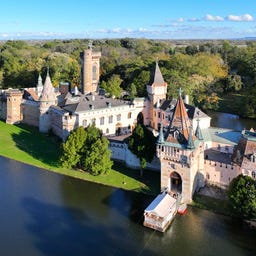
If you want to discover one of Austria’s most beautiful landscape parks, plan a half- or full-day trip to Laxenburg, just 15 km from Vienna. Once the summer retreat of the Habsburgs, this 280-hectare park invites you to unwind amidst monuments, charming paths, and the romantic castle pond.
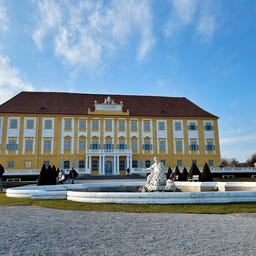
In the picturesque Marchfeld region, just an hour from Vienna, the baroque Schloss Hof invites visitors – and enchants with a petting zoo that makes children's eyes light up. While little ones get up close with rare animal breeds like Mangalitza pigs, donkeys, or Carinthian spectacled sheep, or conquer the adventure playground, adults can enjoy the expansive baroque gardens or the magnificent orangery. An ideal destination for a day trip.
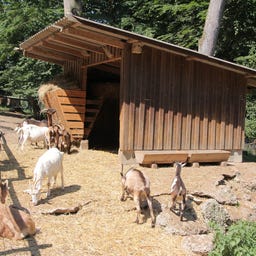
The Stadt Haag Zoo is a wonderful destination for animal lovers and families looking for a relaxing day in nature. Nestled in the Salaberg Castle Park, designed as an English landscape garden in the 19th century, you'll find over 700 animals from around 70 species, including big cats like North Chinese leopards, Siberian tigers, and lynxes, as well as squirrels, donkeys, Barbary macaques, zebras, and brown bears.
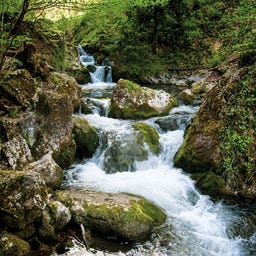
A short hiking trip to the Myra Falls in Muggendorf is a wonderful experience for the whole family. The well-maintained trail, featuring 11 themed stations, follows the course of the Myra stream across 26 bridges. Along its 125-meter descent, the stream forms a series of charming, small waterfalls, creating picturesque views at every turn.
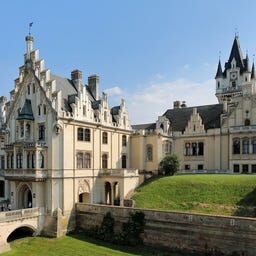
Some places feel like they belong to another era - Grafenegg Castle is one of them. With its fusion of Gothic, Baroque, and Renaissance architecture, set amidst an enchanting English landscape park, it’s like stepping straight into a storybook.
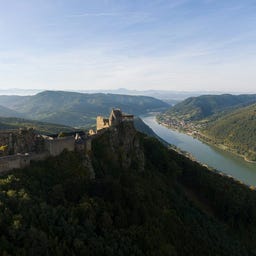
Perched high atop a steep 320-meter rocky spur, the Aggstein Castle Ruins are a place whose turbulent history is sure to send shivers down your spine. With views of the Danube and surrounded by the picturesque Wachau landscape, the ruins invite you to delve into the dark tales of the Middle Ages - from the robber baron Jörg Scheck vom Wald to the chilling "Rosengärtlein," where prisoners faced a cruel choice. Explore the ancient walls, join fascinating guided tours, and enjoy special events like the Castle Advent - all while taking in one of the region's most breathtaking panoramic views. A true highlight for anymedieval history enthusiast!
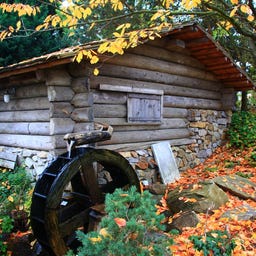
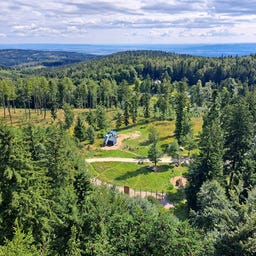
In the Hohe Wand Nature Park, you can expect an impressive rock formation of the Gutenstein Alps, with cliffs that drop steeply to the southeast, reaching heights of up to 230 meters. The expansive park combines alpine and Pannonian vegetation and offers not only marked hiking trails but also secured climbing routes, caves, and a spectacular Skywalk right at the edge of the cliffs.
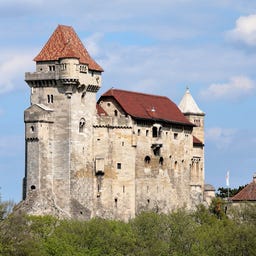
High above Maria Enzersdorf, the impressive Liechtenstein Castle stands on a narrow ridge, built in the 12th century by Hugo I. of Liechtenstein as part of a defensive line against attacks from the east. After being destroyed during the Second Turkish Siege of Vienna in 1683, it remained in ruins for a long time until the Princes of Liechtenstein repurchased it in 1808 and had it rebuilt in a neo-Romanesque style.
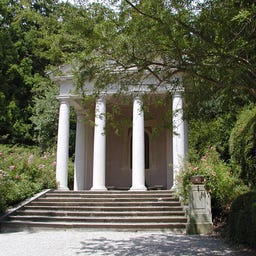
In the picturesque Kurpark located on Badener Berg, you will find a historically developed park that dates back to the 2nd century, when a Roman bathing district was established here. From the modest garden in front of the Theresienbad built in 1758, a vast park landscape with winding paths and impressive structures has evolved over the centuries.
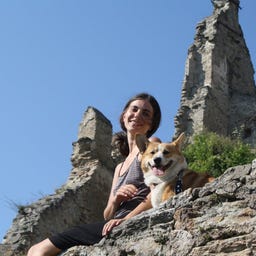
High above the picturesque town of Dürnstein lies this venerable, mystical castle ruin. Once the prison of King Richard the Lionheart, the stone remnants from the 12th century testify to a turbulent past. The short ascent may be steep, but the reward is unbeatable: a panoramic view showcasing the Danube in all its splendor, framed by gentle vineyards and the charm of the Wachau Valley. Here, history is not just felt; it is seen, touched, and breathed. And when the wind sweeps through the ruins, it almost seems as if it whispers legends of times long past.
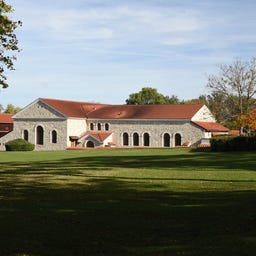
Nestled between Petronell-Carnuntum and Bad Deutsch-Altenburg, just a stone's throw from Vienna, lies the fascinating Roman City of Carnuntum – a place where history comes to life. Once the capital of the province of Upper Pannonia and home to up to 50,000 people, this beautifully reconstructed site offers a deep dive into Roman antiquity.
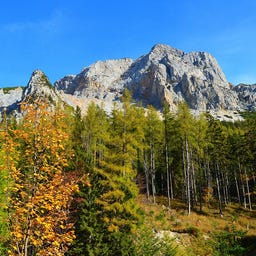
The striking Rax massif in the Northern Limestone Alps rises to its highest point, the Heukuppe, at 2007 meters and offers you an impressive hiking area with its vast karst plateau. Since the first documented ascent by Charles de l'Écluse in the 16th century, the Rax has become a popular destination, accessible since 1925 by Austria's first tourist cable car.
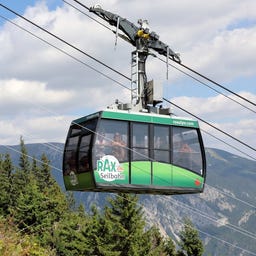
As the first tourist cable car in Austria, you have been gliding from Hirschwang to an altitude of 1,546 meters since 1926 in just 7-10 minutes with the Rax Cable Car. The gondola covers a distance of 2,160 meters and reaches a maximum height of 60 meters above the ground.
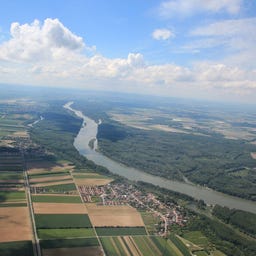
As one of the largest contiguous floodplain areas in Central Europe, the Donau-Auen National Park stretches over 9,600 hectares from Vienna to the Slovak border. The diverse river landscape, with its wetlands, forests, and riverbanks, provides a habitat for over 5,000 animal species, including more than 100 bird species and 50 fish species.
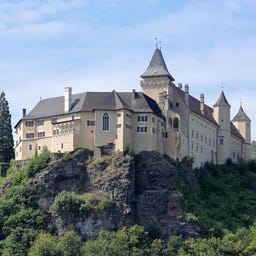
High above the picturesque Kamptal stands the impressive Rosenburg Castle, which dates back to the 12th century and was transformed into a magnificent Renaissance castle with 13 towers between 1593 and 1597.
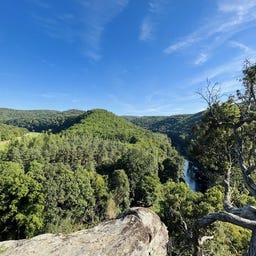
Experience Thayatal National Park: Set in the heart of the picturesque Waldviertel region, Thayatal National Park is a true natural treasure. With its rugged cliffs, dense forests, and the gently meandering Thaya River, this 13.3 km² protected area showcases an incredible diversity of flora and fauna right on the border with the Czech Republic. Over 40% of all plant species found in Austria flourish here, including rare orchids.
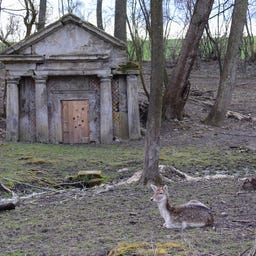
In the 40-hectare Wildpark Ernstbrunn on the edge of the Leiser Mountains, you can explore a diverse collection of native animal species since 1975 - from free-roaming goats to red deer and Highland cattle. The highlight of the park is the Wolf Science Center, established in 2009, where you can observe timber wolves on guided tours and learn more about their behavior. Through a one-way glass in the new testing building, you even have the chance to watch the researchers at work. The nature-oriented wildlife park is located in the northern part of the protected Schlosspark Ernstbrunn and offers a relaxing outing into the wildlife of Lower Austria with its spacious enclosures.
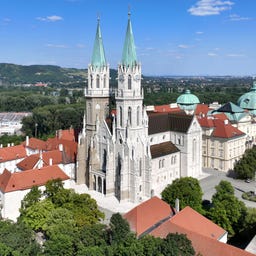
Founded in the early 12th century by Margrave Leopold III., Klosterneuburg Monastery uniquely combines vibrant monastic life, significant art treasures, and one of Austria's oldest wineries. In the impressive St. Mary's Birth Church, you can find the Verdun Altar from 1181, one of the most important medieval artworks in the country. The expansive monastery grounds not only house one of the oldest museums in the world but also the legendary Giant Barrel with a capacity of 56,000 liters. Today, the monastery is a lively center of the Catholic faith, offering regular tours, concerts, exhibitions, and an opera festival since 1994.
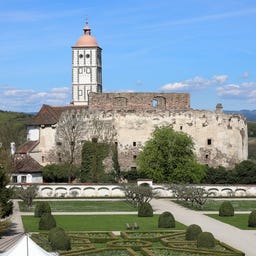
The Schallaburg, a Renaissance castle with medieval roots, is located in the Mostviertel near the Wachau and is one of the most popular excursion destinations in Lower Austria. With annually changing exhibitions, guided tours, a lovingly designed Renaissance garden, and regular concerts, the Schallaburg has quite a lot to offer.
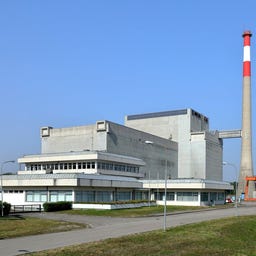
The Zwentendorf nuclear power plant is a unique attraction worldwide. As a fully constructed nuclear power plant that was never put into operation following a historic referendum in 1978, it offers insights into areas that are usually strictly off-limits – right up to the reactor core.
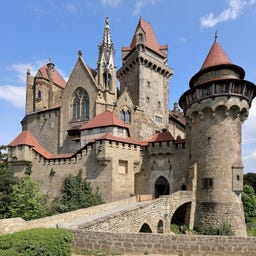
High above the Danube sits the neo-Gothic showcase castle Kreuzenstein, built in the 19th century by Johann Nepomuk Count Wilczek on the ruins of a medieval fortress. First mentioned in the 12th century as "Grizanstein," the original castle was destroyed in 1645 during the Thirty Years' War by Swedish troops.
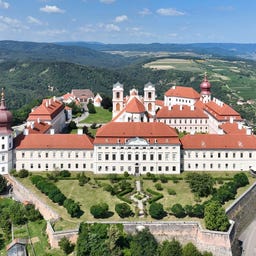
High above the Wachau Valley stands the strikingly visible Göttweig Abbey, often called the Austrian Montecassino. Founded by Bishop Altmann of Passau in 1083, this Benedictine monastery has a fascinating history, marked by devastating fires and magnificent reconstructions.
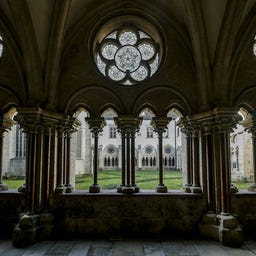
The Heiligenkreuz Abbey, nestled in the rolling hills of the Vienna Woods, is one of the world’s oldest Cistercian monasteries. Founded in 1133 by Margrave Leopold III, the abbey captivates visitors not only with its nearly 900 years of continuous monastic tradition but also with its extraordinary architecture: a Romanesque abbey church, a delicate Gothic cloister, and Baroque artworks.
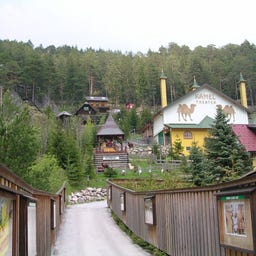
In Kernhof, Lower Austria, about 50 km south of St. Pölten, you can expect an extraordinary combination of theater and zoo. The Kameltheater Kernhof offers animal performances featuring camels and other exotic animals during the summer months, with up to 250 spectators, making it especially enjoyable for children.
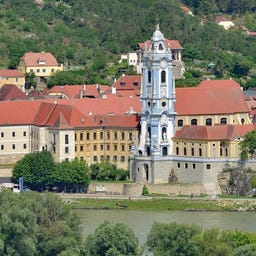
High above the Wachau, the Augustinian Canons' Monastery Dürnstein rises with its distinctive blue and white church tower, which is now considered a landmark of the entire region. Originally founded in 1410, the monastery took on its current baroque form in the early 18th century through the architects Jakob Prandtauer, Joseph Munggenast, and Matthias Steinl. After its dissolution in 1788 under Emperor Joseph II., the monastery came under the administration of the Monastery of Herzogenburg, which still oversees it today. Within the historic walls, you will find not only private residences and a primary school but also an impressive permanent exhibition in previously inaccessible areas, as well as an original baroque organ from 1719.
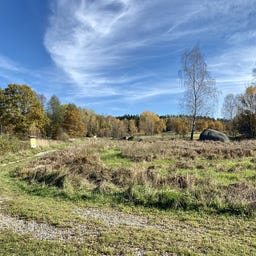
In the nature park Blockheide near Gmünd, you can expect a unique landscape of bizarrely shaped granite blocks, heath areas, and open mixed forests.
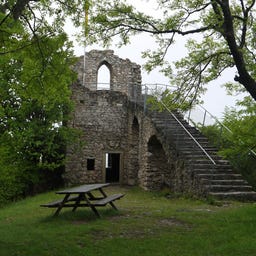
In Austria's oldest nature park, which opened in 1962, you can expect to see a dense population of mouflons, fallow deer, and wild boars in a historic hunting area once established by Prince Johann I. Joseph of Liechtenstein.
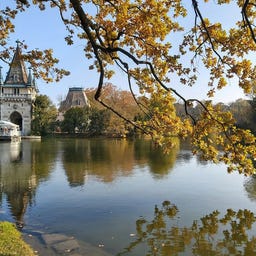
In the castle park of Laxenburg, you will find the Franzensburg, a fascinating water castle from the early 19th century, built as a museum by Emperor Franz II. The artificially created castle island features magnificent rooms like the Habsburg Hall and the Armory with shields representing all 44 Austrian provinces.
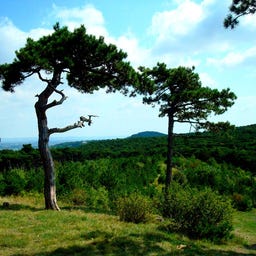
In the early 19th century, Johann I, Prince of Liechtenstein established the first Austrian English Garden, and today the 6,500-hectare nature park Föhrenberge stretches along the eastern edge of the Vienna Woods.
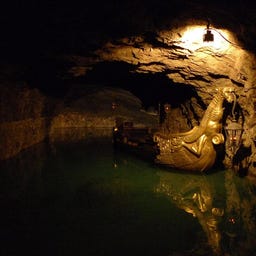
In the Seegrotte south of Vienna, you can explore Europe's largest underground lake, covering an impressive area of 6,200 m². The former gypsum mine from the 19th century was transformed into a show mine in 1932 and now attracts around 250,000 visitors each year.
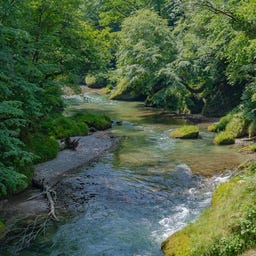
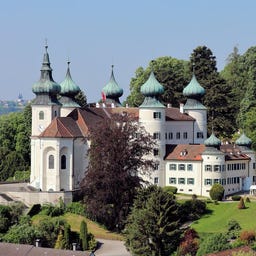
Majestically, Artstetten Castle overlooks the Danube Valley - a place rich in history, closely tied to the fate of the Habsburgs. While the original structure dates back to the 13th century, it is primarily the Renaissance building from the 16th century, along with its baroque castle church, that defines the castle's appearance today.
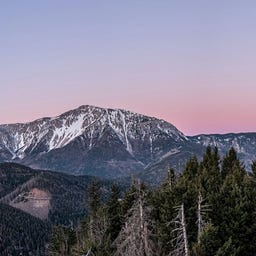
At 2076 meters, the Schneeberg stands majestically as the highest mountain in Lower Austria and the easternmost two-thousander of the Alps, overlooking the region. Its distinctive twin peaks, Klosterwappen and Kaiserstein, can even be seen from Vienna on clear days.
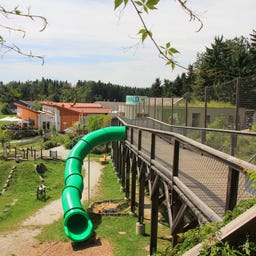
In Arbesbach, Lower Austria, a unique bear sanctuary project by the animal welfare organization Four Paws awaits you on 14,000 square meters. Since 1998, bears from poor living conditions have found a proper home here, where they can bathe, dig, and climb in a natural environment.
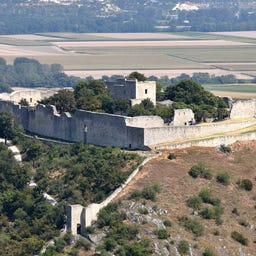
High above Hainburg an der Donau stands the impressive ruins of Heimenburg, which has guarded the important Danube crossing at the Hungarian border since the 11th century. This strategically significant site has seen many turbulent times, from being the residence of Margarete von Babenberg in the 13th century to its role as a Habsburg border fortress.
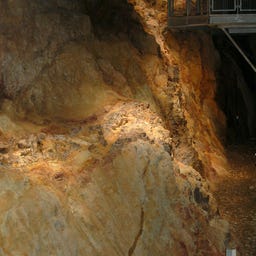
In the Amethyst World Maissau, you can explore one of the largest accessible amethyst veins in the world, which was discovered by chance during quarrying in 1845. The complex, opened in 2005 by Governor Erwin Pröll, combines a museum, theme park, and recreational facility into a unique destination centered around the purple gemstone.
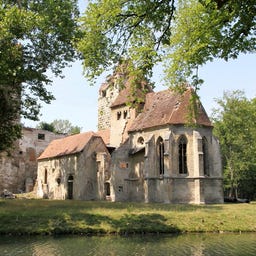
Discover the lost water castle of Pottendorf, a photogenic ruin surrounded by an idyllic park filled with ancient trees, enchanted ponds, and a thousand-year-old lime tree. The restored castle chapel is regularly used for concerts and cultural events, while the park itself offers perfect conditions for long walks and stunning photo opportunities. Especially in autumn, when the foliage glows in warm colors, the park reveals its full beauty.
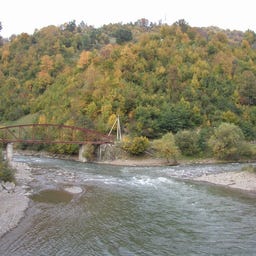
In a unique network, the original beech forests of the Carpathians and other European regions span 18 countries, offering you insights into untouched forest ecosystems. Covering a total area of 92,023 hectares, you will find 94 different forest areas here, stretching across various climate zones—from Mediterranean to alpine regions. The largest contiguous area of original beech forests in the world, Uholka-Shyrokyi Luh, is located in Ukraine and is part of this natural treasure that has been a UNESCO World Heritage site since 2007. You can explore these living natural laboratories on well-maintained hiking trails and discover rare plant and animal species along the way.
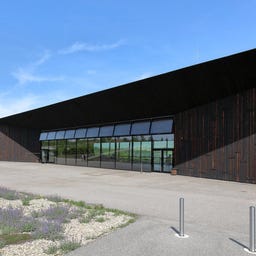
In the largest open-air museum in Lower Austria, you can experience authentic village life of the Weinviertel on 20 hectares with 75 historical buildings that have been harmoniously assembled. Founded in 1977 by Josef Geissler, the Museumsdorf Niedersulz invites you to stroll through well-maintained historical gardens featuring old fruit varieties and to stop by a functioning historical inn.
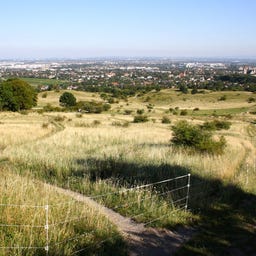
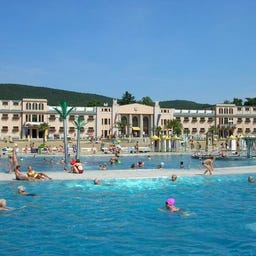
At the Thermalstrandbad Baden, you can expect one of the largest adventure pools in Austria, featuring the most extensive artificial sandy beach in the country. Opened in 1926, the facility spans 25,000 m² and is fed by sulfur water from the Marienquelle.
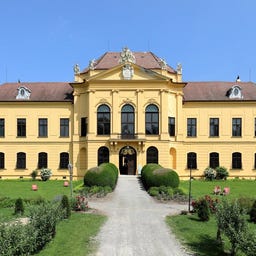
In the heart of the Donau-Auen National Park, you will find Schloss Eckartsau, a historic noble residence that evolved from a 12th-century water castle to an imperial hunting lodge. The magnificent building, designed by Joseph Emanuel Fischer von Erlach, impresses particularly with its grand staircase made of white Kaiser stone and is part of the historical ensemble of the Marchfeld Castles.
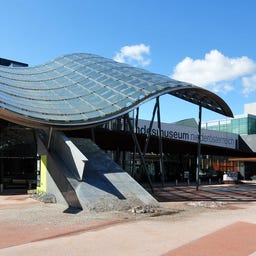
In the modern Museum of Lower Austria in St. Pölten, designed by Hans Hollein, you can expect a unique combination of history, art, and nature from the region. Opened in 2002, this museum is the only institution in Austria that also houses live animals, officially making it a zoo.
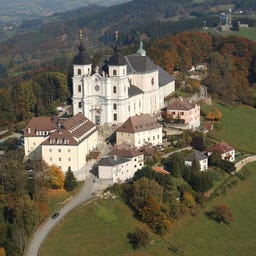
Majestically, the Basilica of Sonntagberg sits atop a hill in the Mostviertel region, serving as a prominent landmark since the early 18th century. This impressive Baroque structure, designed by Jakob Prandtauer and Josef Munggenast, houses one of the most significant fresco cycles by the painter Daniel Gran as well as one of Austria's most important late Baroque organs.
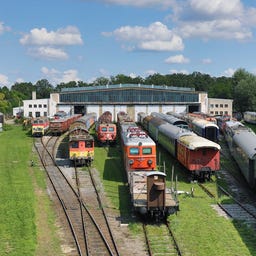
In Strasshof an der Nordbahn, Lower Austria, you can visit Das Heizhaus, one of the most significant railway museums in Austria. On the historic site, which served as an active railway depot until 1978, you can admire around 80 locomotives and over 180 carriages today—some of which are still operational.
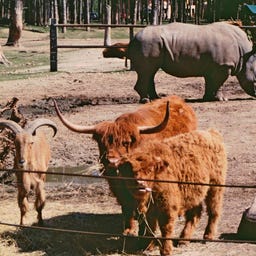
The adventure park includes, among other things, a high ropes course with a petting zoo and an archery course. The site used to be home to the well-known Gänserndorf Safari Park, which went bankrupt in 2004.

High above the Semmering Pass, the impressive Südbahnhotel stands, having opened in 1882 as the first hotel in the region and quickly becoming a meeting point for the Austrian aristocracy.
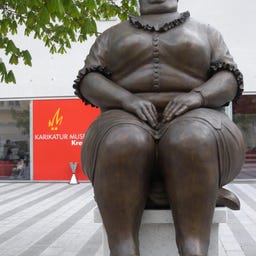
In the only Austrian museum dedicated to satirical art, you will find political cartoons, comics, and critical drawings from the 20th and 21st centuries. The Karikaturmuseum Krems, which opened in 2001, was designed by architect and cartoonist Gustav Peichl and impresses with its transparent glass facade on the ground floor.
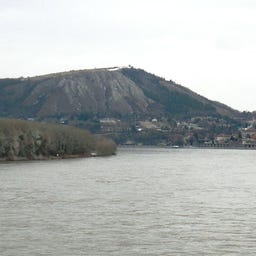
On the 346-meter-high Braunsberg near Hainburg, you can expect not only an impressive view over the Danube all the way to Bratislava but also a significant archaeological site. This striking limestone rock, which geologically connects the Alps with the Carpathians, was inhabited 7,000 years ago and hosted an important Celtic hill settlement in the 2nd century BC.
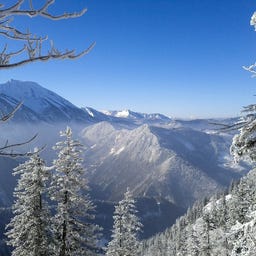
With its 1893 meters, the Ötscher majestically towers as the highest peak of the Mostviertel over the northern limestone Alps, visible from up to 100 kilometers away in good weather.
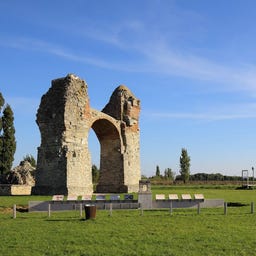
As an impressive victory monument from the 4th century, the Heidentor rises in the midst of the archaeological landscape of Carnuntum, a significant Roman military camp along the Pannonian limes.
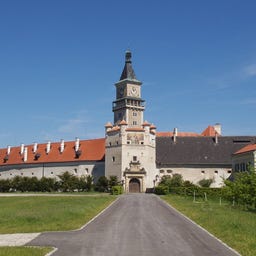
High above the market town of Wallsee-Sindelburg stands the historic Wallsee Castle, which is still privately owned and cannot be visited. This former noble residence was acquired in 1895 by Archduchess Marie Valerie, the daughter of Emperor Franz Joseph I. and Elisabeth, and was subsequently extensively renovated.
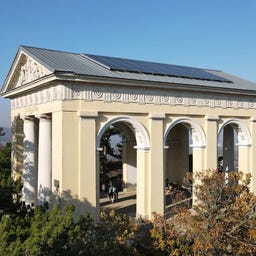
High above the Vienna Basin stands the Husaren Temple, a neoclassical structure in the Föhrenberge Nature Park near Mödling, which is one of the oldest war memorials in Austria. Commissioned by Prince Johann I. Joseph of Liechtenstein, the temple was built in 1813 by architect Joseph Kornhäusel as the "Temple of War Glory" to honor the fallen soldiers of the Battle of Aspern.
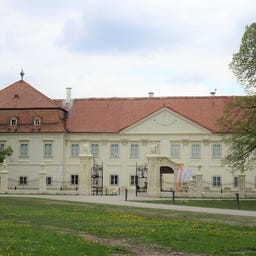
Schloss Marchegg is a hidden gem in the heart of the Marchfeld. Originally built in 1268 by King Ottokar II. as a fortified city castle on the border with Hungary, it was rebuilt in the 16th century by Count Niklas Salm after being destroyed during the Turkish invasions. Later, the Hungarian noble family Pálffy transformed it into a splendid hunting lodge. Today, the castle is renowned for hosting Central Europe’s largest white stork colony, which visitors can observe from late March to mid-August.
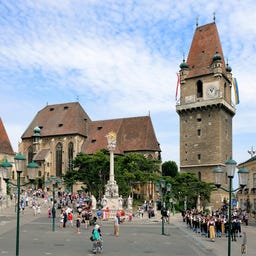
The impressive Perchtoldsdorf Castle stands on the edge of the Vienna Woods and has a rich history that dates back to before the year 1000. Originally built for protection against Hungarian invaders, the fortress was destroyed and rebuilt several times, including during the Turkish sieges in the 16th century and in 1683.
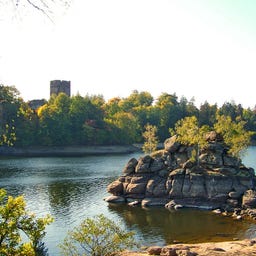
The "Ottenstein Reservoir" is the uppermost of the three Kamp reservoirs in the Waldviertel region of Lower Austria and a popular recreational and excursion destination. Downstream are the Dobra Reservoir and the Thurnberg Reservoir.
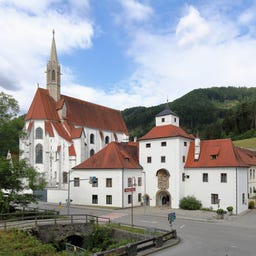
In the Carthusian monastery Marienthron in Lower Austria, you will find one of the largest former Carthusian monasteries in Europe, founded in 1330 by Duke Albrecht II. as a result of a battle vow. The impressive complex reached its peak in the 15th century under Prior Sigismund, with 39 monks, before being dissolved by Emperor Joseph II. in 1782.
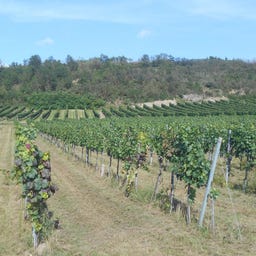
Along the Danube, the Wagram stretches out as a prominent ridge, rising up to 40 meters high, with its steep loess walls shaping the landscape. The region was settled from Passau in the 11th century and is now home to a traditional wine-growing area with an ideal microclimate for wine, apricots, and cherries.
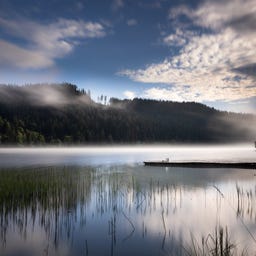
At the foot of the Gemeindealpe, you will find the Erlaufsee, a mountain lake on the border between Lower Austria and Styria, which even inspired Franz Schubert to write a song. With its natural beach, clear water, and fascinating underwater landscape, it is now a paradise for swimmers, divers, and anglers.
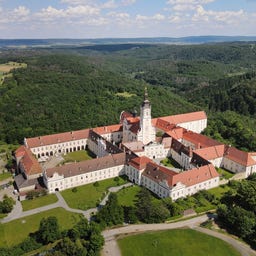
High above the Lower Austrian town of Altenburg stands the Benedictine monastery of the same name, which has experienced a tumultuous history since its founding in 1144 by Hildburg von Poigen-Rebgau. The impressive Baroque complex, with its 208-meter-long main facade, still houses an active community of Benedictine monks and captivates visitors with the magnificent frescoes by the artist Paul Troger.
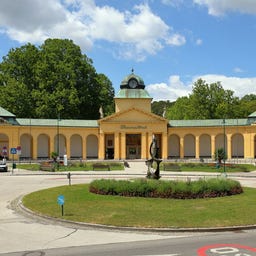
At the historic Thermalbad Bad Vöslau, you can enjoy a spacious bathing area of 45,000 m² featuring healing mineral water that has been flowing for bathers since 1822. The spring, tapped by Johann Malfatti in 1825, now feeds four different pools, including the distinctive "green pool" with its tree-covered island and the over 1,000 m² sports pool.


High above the Ybbs River, the impressive Rothschild Castle stands on a conglomerate rock - a medieval building from the 13th century that was remodeled in the neo-Gothic style after its acquisition by Albert Salomon Anselm von Rothschild in 1875. The striking 33-meter-high keep with its modern glass structure and the picturesque courtyard with neo-Gothic arcades define the appearance of the complex today.
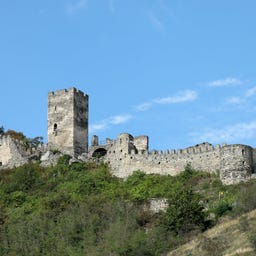
Perched high above Spitz an der Donau, the little-known Hinterhaus Ruin offers a fascinating glimpse into history. Once a formidable fortress and control post for the Danube under the notorious Kuenringer family, it is now a serene spot with spectacular views. Its terraced architecture, complete with a towering keep and numerous rooms, invites you to explore and imagine its storied past.
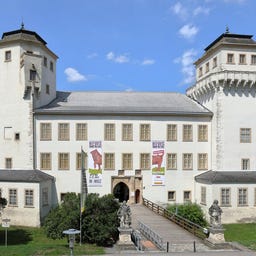
In the wine region of Lower Austria, you can discover the impressive Asparn Castle, a building from the 13th century that now houses the MAMUZ Museum. Across three floors and a 19,000 m² outdoor area, you can explore 40,000 years of European settlement history. Originally built by Hadmar von Sonnberg, the castle features two powerful corner towers from the 15th century and was extensively renovated and made accessible in 2013. In the archaeological workshops and the "research lab," you can get hands-on and try out historical craft techniques.
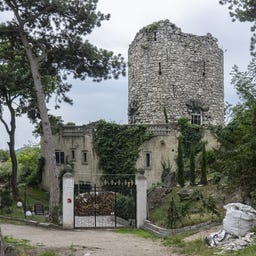
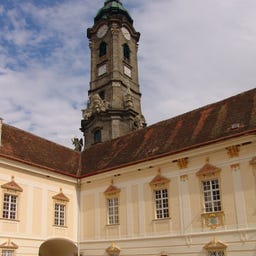
In the Waldviertel region of Lower Austria, you will find the Stift Zwettl, the third oldest continuously operating Cistercian monastery in the world, founded in 1138 by Hadmar I. von Kuenring. The impressive complex features a stunning 82-meter high baroque west tower facade and houses a significant art-historical Romanesque-Gothic cloister, as well as a magnificent library with over 400 medieval manuscripts.
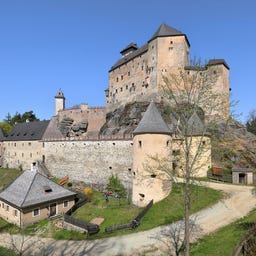
High above the Waldviertel region of Lower Austria stands Rappottenstein Castle - one of the best-preserved medieval castle complexes in Austria, which has never been conquered since its founding around 1150 by Rapoto von Kuenring.
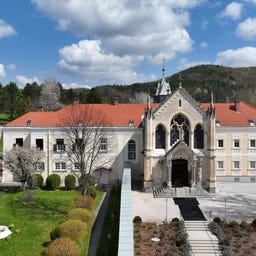
In the former hunting lodge Schloss Mayerling, the mysterious tragedy involving Crown Prince Rudolf of Austria-Hungary and his lover Mary Vetsera took place in 1889, and the exact circumstances of their deaths remain unclear to this day.
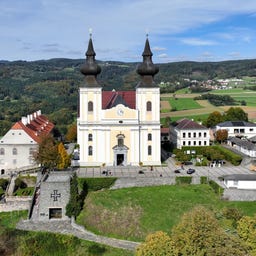
High above the Danube Valley, the baroque pilgrimage church of Maria Taferl stands as a prominent landmark in the historic Nibelungengau. This magnificent sacred building, with its distinctive double-tower facade, was constructed between 1660 and 1724 and became the second-largest pilgrimage site in present-day Austria after Mariazell.
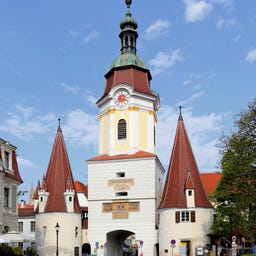
The Steiner Gate is the last remaining city gate of Krems an der Donau and is now considered a landmark of the city. This striking structure consists of two medieval flanking towers and a baroque addition from the time of Maria Theresa in 1756.
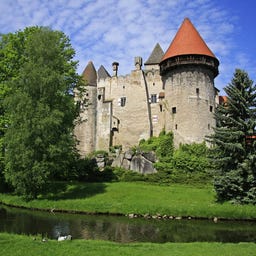
On a rocky outcrop in the Waldviertel region of Lower Austria stands the impressive Heidenreichstein Castle - one of the few water castles in Austria that is inhabited year-round. Founded around 1180 by Heidenreich, this fortress once secured important trade routes to Bohemia and today impresses with its moats, defensive towers, and two drawbridges.
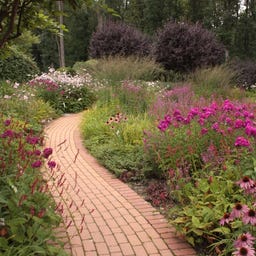
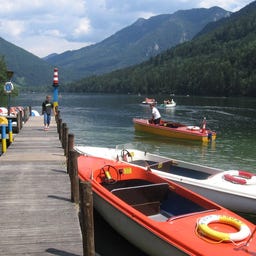
As the only naturally formed lake in Lower Austria, Lunzer See attracts visitors with its crystal-clear, cool water and impressive scenery. The lake stretches for 1.7 kilometers and has become a special cultural spot thanks to its floating stage on the west shore.
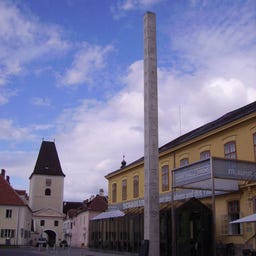
In the former tobacco factory from the 19th century, you will find one of Austria's largest exhibition spaces for modern and contemporary art today. The Kunsthalle Krems opened in 1995, designed by Adolf Krischanitz, and offers 2000 square meters for painting, sculpture, photography, video, and installation art.
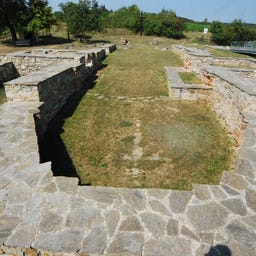
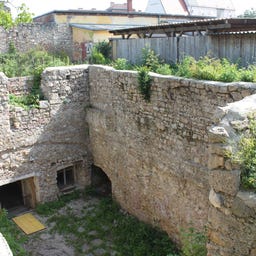
In the mighty casemates of Wiener Neustadt, you discover a unique fortress complex from the 16th century that originally served as an armory. The impressive structure, with its rustic round arch portal from 1557 and more than 20 rooms featuring various vault styles, was revitalized in 2019 after centuries of history and war damage.
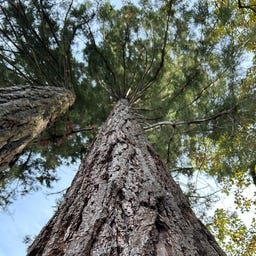
Hidden in the Dunkelsteinerwald near Stift Göttweig, the majestic sequoias on the plateau of the Eichberg rise skyward. Planted in 1880 by Adalbert Dungel, the monastery's forest manager, these 140-year-old North American giants are among the tallest and oldest of their kind in Austria.
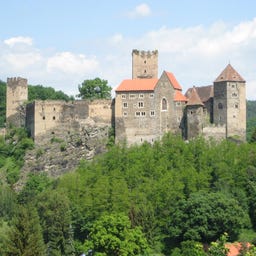
High above the Thayatal stands the impressive Hardegg Castle, one of the largest castle complexes in Lower Austria, with a history dating back to the 12th century. What started as a small fortification was expanded by the Counts of Plain and Hardegg into a significant administrative center and changed hands several times over the centuries, including ownership by the Habsburgs.
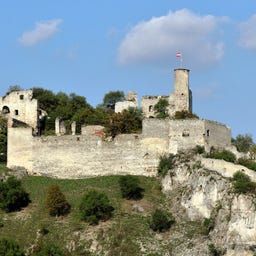
High above the northern Weinviertel, Falkenstein Castle stands majestically on a prominent limestone rock - one of the oldest castle complexes in Lower Austria, built around 1050 as a royal fortress.
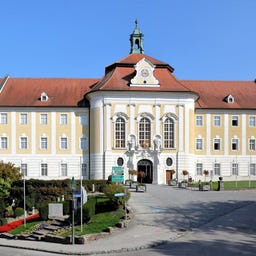
As the "Four-Cornered House of God," the Benedictine monastery of Seitenstetten has stood since 1112 in the Mostviertel region of Lower Austria, founded by Udalschalk von Stille und Heft. In this impressive complex, you can admire late Gothic and Baroque architecture, including the Knight's Chapel, the Abbey Staircase with a ceiling fresco by Bartolomeo Altomonte, and the Marble Hall featuring works by Paul Troger.
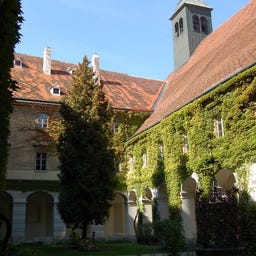
In the heart of Wiener Neustadt, you will find the Stift Neukloster, one of the youngest medieval monastery foundations in Austria, established in 1444 by King Friedrich III. This former independent Cistercian monastery houses significant art treasures, including a Gothic altar from the 15th century and a magnificent library with over 9,000 historical volumes.
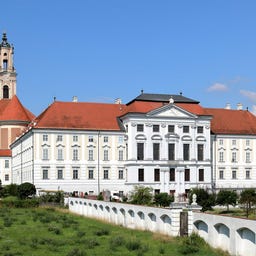
In the Traisental region of Lower Austria, the impressive Augustinian Canons' Monastery of Herzogenburg rises with its distinctive Baroque church, which was completed in 1785 as the last major Baroque church in Austria. The monastery, originally founded in 1112 and relocated to its current site in 1244, was magnificently redesigned in the Baroque style starting in 1714 by the renowned architects Jakob Prandtauer and Johann Bernhard Fischer von Erlach.
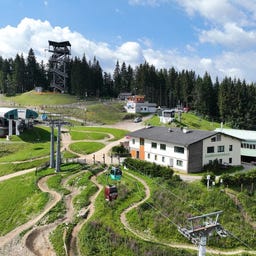
At Hirschenkogel (1340 m) in the Semmering area of Lower Austria, you can look forward to the Zauberberg, one of the most modern ski resorts in Eastern Austria. The 14 kilometers of slopes are guaranteed to have snow from December to March thanks to the snowmaking system, and they are illuminated by Europe's strongest floodlight system, which also allows for night skiing. From the exit of the only gondola lift in Lower Austria, a 3-kilometer-long, illuminated natural toboggan run leads down into the valley. Since 1995, Hirschenkogel has also hosted Ski World Cup races, with the floodlit slaloms creating a particularly spectacular atmosphere. At the summit, you will find the Millennium Tower and the Liechtenstein House, where you can recharge with regional specialties.

In the picturesque Rosenau Castle, which was built as a Renaissance structure in the 16th century and later transformed into a Baroque style, you can embark on a fascinating journey through the history of Freemasonry.
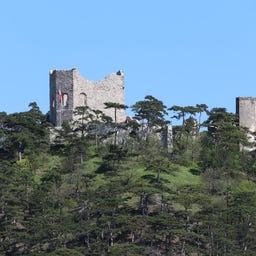
High above the Mödlingbach stands the ruins of one of the largest castle complexes in Austria from the 12th century, known more for its artistic significance than for military conflicts. As the ancestral seat of a branch of the Babenberg family, the castle housed the minstrel Neidhardt von Reuental around 1230, before it fell into disrepair in 1556 after several fires and a lightning strike.
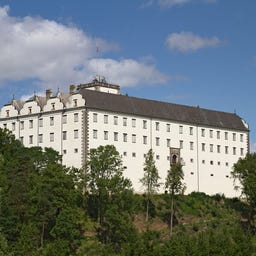
Majestically, the Renaissance castle overlooks the historic old town of Weitra in the Waldviertel region of Lower Austria. Originally built by Hadmar II von Kuenring in the early 13th century, the castle was transformed into a magnificent Renaissance palace in the late 16th century according to plans by Pietro Ferrabosco.
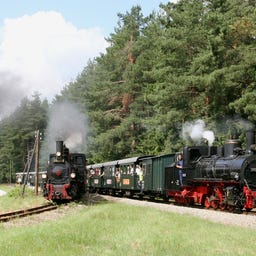
In the northern Waldviertel, you can explore the Waldviertler Schmalspurbahnen, a historic railway network made up of three interconnected lines that have been serving the region since 1900. The narrow-gauge tracks, with a width of 760 mm, connect Gmünd with Litschau, Heidenreichstein, and Groß Gerungs, and are now used exclusively for tourism.
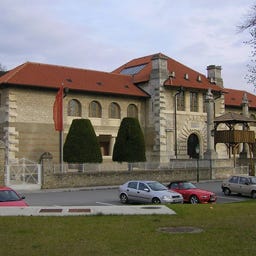
In Austria's largest Roman museum, you can expect an impressive collection of over 2 million ancient artifacts from the Roman Carnuntum. The Museum Carnuntinum, opened in 1904 by Emperor Franz Joseph I., was built in the style of a Roman villa and serves as a treasury for the extensive archaeological site.
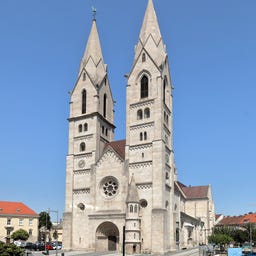
The impressive Cathedral of Wiener Neustadt combines late Romanesque and Gothic architectural elements, making it one of the most significant church buildings in Lower Austria. Founded as the Cathedral of Our Lady in 1279, it served as the cathedral of the Diocese of Wiener Neustadt for over 300 years and today captivates visitors with its distinctive western facade and two towers.
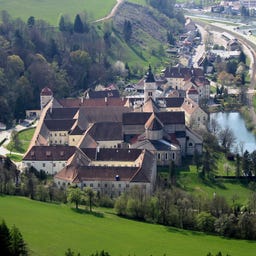
In the Mostviertel region of Lower Austria, you can visit the Stift Lilienfeld, one of the largest and best-preserved Cistercian monasteries in Central Europe, founded in 1202 by Duke Leopold VI. This architectural masterpiece combines medieval craftsmanship with early Baroque extensions from the 17th and 18th centuries and houses an impressive library with 40,000 volumes.
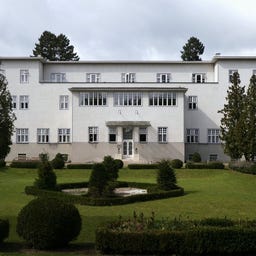
The Sanatorium Purkersdorf, built in 1905 by Josef Hoffmann, is considered a masterpiece of the Vienna Secession and was originally designed as a fashionable spa for the Viennese elite. At the beginning of the 20th century, artists and intellectuals like Gustav Mahler and Arnold Schönberg gathered here for social exchange while enjoying the healing properties of the on-site spring.
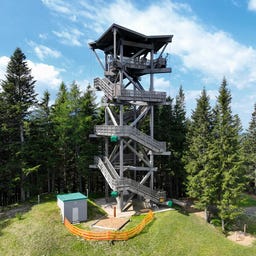
From the 30.5-meter-high Dr. Erwin Pröll Lookout at the summit of Hirschenkogel, you can enjoy an impressive panoramic view that stretches from the Semmering-Rax massif across Styria to the Vienna Basin and Lake Neusiedl.

High above the town of the same name stands the partially restored Kirchschlag Castle Ruins, one of the most significant border fortresses in Eastern Austria from the 12th century. The impressive 22-meter-high keep now serves as a lookout tower, offering you a stunning panoramic view over the Bucklige Welt.
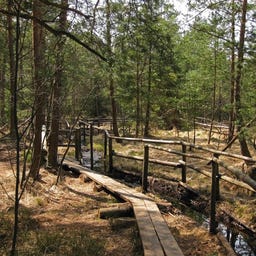
In the Heidenreichsteiner Moor Nature Park, you can explore one of Austria's best-preserved moor landscapes along a 2.8-kilometer moor path and a 3.2-kilometer pond trail. The 30-hectare protected area is home to rare plants like sphagnum moss and cotton grass, as well as the striking Hanging Stone, an impressive rock formation at the northern edge of the area.
